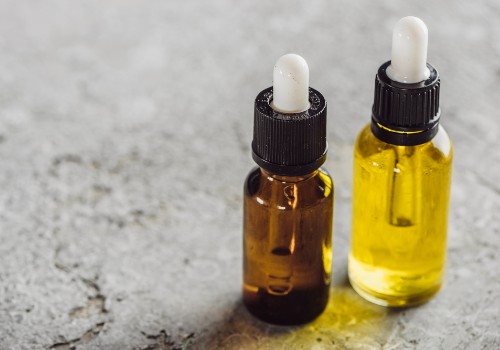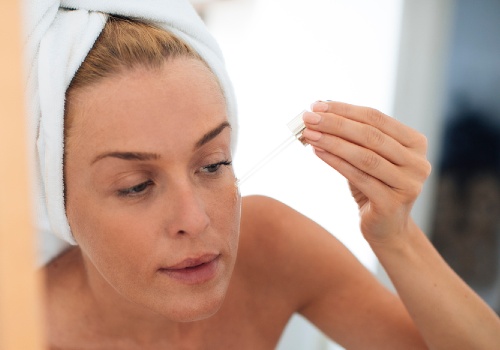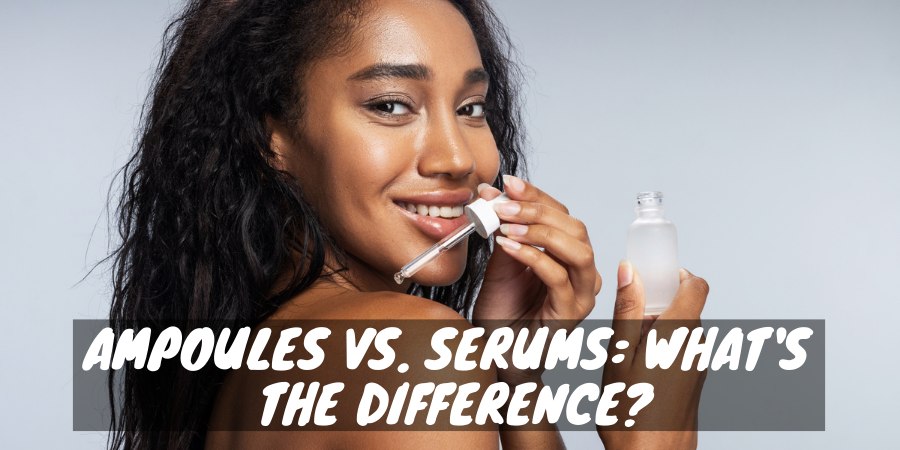There are so many components of a thorough skincare routine that it can be difficult to keep track of what’s what.
Among the most confusing products: serums and ampoules.
These two products seem to serve similar purposes, but they’re considered separate from one another for a reason.
So what’s the difference between serums and ampoules, and which one should you be using?
Read on to find out.
What Are Serums and Ampoules?

Serums: Targeted Relief for Skin Concerns
Serums are a staple of the skincare aisle in America and Europe. Nearly every skincare brand offers at least one serum in their product line, and for good reason.
These gel-like products are formulated to target specific skin concerns like dryness, hyperpigmentation, dullness and wrinkles. They’re generally lightweight and easy to spread on the skin.
Serums are often defined by their primary ingredient — vitamin E, vitamin C, retinol and hyaluronic acid serums are all common. Additionally, many contain antioxidants and other health-boosting ingredients.
How Do I Incorporate Serums Into My Beauty Routine?
Serums are typically applied close to the end of your skincare routine, before moisturizing but after cleansers, toners and other products. Using a toner right before applying serum will enhance the absorption of the serum.
Because serums are highly concentrated, you need much less of it than you do toner or moisturizer. A few drops or a single pump should be plenty.
Application is easy: just gently dab the serum onto the targeted areas of your skin. Give it a few minutes to be absorbed into your skin before applying your moisturizer.
Ampoules: Taking Serums to the Next Level
Ampoules serve a very similar purpose to serums: they target and treat specific skin concerns, from aging to dehydration to acne.
But ampoules contain much higher concentrations of active ingredients than serums do.
They also tend to pack more active ingredients into one product. For example, you could use a vitamin C serum, or you could use an ampoule that contains even more vitamin C, plus vitamin E and retinol.
Ampoules got their start in South Korea, which is known for its innovative beauty trends and treatments. Now that they’ve gained popularity in other countries, they’re starting to pop up in specialty skincare shops as well as chain retailers.
How Do I Incorporate Ampoules Into My Beauty Routine?
Some ampoules are formulated with ingredients that are gentle enough for daily use.
Others are stronger and intended for short-term use, such as the during the week before a major event or following a skincare emergency.
It’s important to read the label to determine whether you have an everyday ampoule or a short-term one. Using a short-term ampoule for long periods of time can cause irritation and other problems.
Ampoules typically come in a small dropper bottle, which allows you to easily dispense a drop or two onto your clean fingertip and gently dab it onto your skin.
Like serums, they’re applied after cleansing and toning but before moisturizing. Absorption of the active ingredients will be much more effective if you use a gentle toner before applying the ampoule.
Should I Use a Serum or an Ampoule?

So should you be targeting your skin problems with a simple serum, or bring out the big guns and tackle your troubles with an ampoule?
Well, it really depends on the type and severity of your skin issues.
If you’re dealing with occasional dryness, mild discoloration or very fine lines, a serum should work just fine for you. In fact, an ampoule might be too powerful, especially if you have sensitive skin.
However, if you’re dealing with severe skin issues, if you have multiple coexisting concerns or if you need rapid results, go with an ampoule. The higher concentrations of ingredients in ampoules could make a big difference for you.
Ultimately, though, both serums and ampoules accomplish the same things, and should be chosen based on ingredients rather than product type. The deciding factor will be the strength you think your skin can handle.
Do Skin Type and Texture Make a Difference?
Unlike many other products, serums and ampoules typically work on all skin types.
Because they treat specific issues rather than serving a more general-purpose (like cleansing or moisturizing), they’re generally suitable for use on any skin type or texture.
However, it’s still important to consider your skin type if you’re looking for a hydrating or oil-decreasing serum or ampoule. Mismatching these products to your skin type can have the opposite intended effects.
And one skin type needs to be extra cautious: sensitive skin. Ampoules are less likely than serums to be tolerated by sensitive skin due to their higher concentrations of active ingredients.
Do I Need Both Serums and Ampoules?
Still not sure which one to use? You might find it worthwhile to try using serums and ampoules together.
In fact, using both serums and ampoules can help you optimize your skincare routine while tackling all of your toughest concerns.
You can freely layer multiple serums and ampoules over one another, provided that you start with the lightest-weight product and finish with the heaviest.
This is a great solution for those with multiple skin issues, such as dryness and wrinkles. You can apply a hydrating serum, let it get absorbed, then follow up with an anti-aging ampoule.

